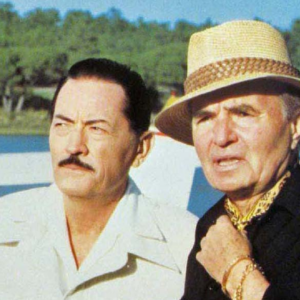As a lifelong fan of James Bond and the spy genre, I am honored to take on the mantel of 007 in a new saga expanding the Double O section. While introducing a new female Double O in Double or Nothing, I looked to other writers for inspiration and discovered and re-discovered so many brilliant leading ladies. I can’t possibly rank them, so here are my ten espionage novels centering women’s stories in chronological order.

N or M? by Agatha Christie (1941)
Agatha Christie writes a spy novel! What more could a person want? Set during World War Two, N or M? explores the fear of ‘the enemy within’—Nazis posing as ordinary citizens within Britain. The Intelligence service calls on married detectives Tuppence and Tommy Beresford, who must seek out N and M, their opposites at a seaside hotel where every guest is hiding a secret. N or M? was written as Christie moved into the Isokon Building in London, a Modernist icon that was home to the runner of the infamous spy ring, the Cambridge Five—what did Agatha know…?
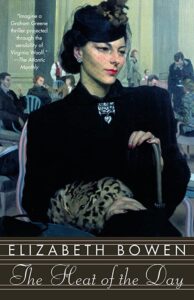
The Heat of the Day by Elizabeth Bowen (1948)
Drawing on her experiences in wartime London, Bowen’s spy novel captures a surreal and heady time lived out between bombings, in which loyalty, truth and identity are just as precarious as survival. Stella Rodney is caught between her lover Robert, a spy, and Harrison, a counter-spy who is obsessed with Stella and tries to convince her that Robert is a traitor. Bowen’s prose is luminous and the claustrophobic atmosphere of the novel will stay with you long after you close its pages.
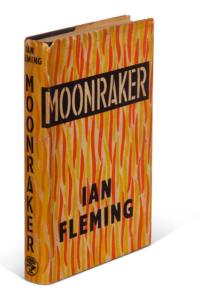
Moonraker by Ian Fleming (1955)
Ian Fleming’s third Bond novel introduces us to one of his most compelling female characters – Gala Brand, an Special Branch undercover agent embedded with Hugo Drax: scientist, patriot and enigmatic millionaire, whose loyalty to Britain has come into sharp question. Brand is a capable agent whose first reaction to Bond is simply that he’ll mess up her mission: ‘Commander Bond. James Bond. Clearly a conceited young man like so many of them in the Secret Service. … He could probably shoot all right and talk foreign languages and do a lot of tricks that might be useful abroad. But what good could he do down here without any beautiful spies to make love to.’ Touché.
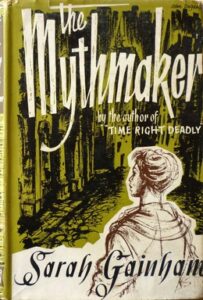
The Mythmaker by Sarah Gainham (1957)
You’ll have to find this lost gem second-hand, but it’s worth it—a spy story set in post-War Vienna, the protagonist was inspired by Gainham’s good friend Ian Fleming and her own time as a journalist in Europe. In Autumn 1945, Kit Quest is a young officer of the British army recruited by Intelligence services to root out a Nazi hiding amongst his Austrian relatives. Caught between black market dealers, the claims for justice from Jewish Survivors, his own family, Britain, and America, Kit’s bewildering search is reminiscent of The Third Man. (Incidentally, Sarah Gainham is Fleming’s tour guide to Berlin in Thrilling Cities.)

The Spy Who Loved Me by Ian Fleming (1962)
The only one Bond novel that Ian Fleming wrote in the first person and narrated by a woman, The Spy Who Loved Me follows Vivienne Michel, a young journalist who runs afoul of the mob in the Adirondacks. Bond does not join the narrative until part three, and the first two parts offer a surprising and sympathetic portrayal of a single woman in early sixties London, tackling the glass ceiling, sexual assault and abortion. Most of the action is contained in an isolated motel, and the book reads like a breathless bottle episode.

Modesty Blaise by Peter O’Donnell (1965)
Peter O’Donnell’s Modesty Blaise introduces Modesty, retired criminal turned spy, and her loyal lieutenant Willie Garvin, a working class hero who has a way with throwing knives. Many of the blurbs on Modesty Blaise paperbacks promise “a female Bond” but Modesty is better than that—endlessly stylish, tough, smart, vulnerable, flawed, capable and super cool, she has no comparison. An iconic trailblazer that led the way for all female heroes that follow in her footsteps. Peter O’Donnell first brought Modesty to life in comic strips, and went on to write eleven novels and two short story collections.
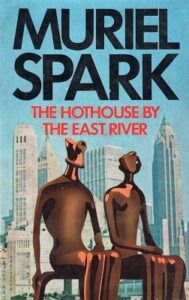
The Hothouse by the East River by Muriel Spark (1973)
Muriel Spark’s The Hothouse by the East River is a hallucinatory, farcical, paranoid and uncanny spy story that makes you question what we mean by reality. Drawing on her own experiences working at a black ops site in Britain during the war, Spark’s main characters Paul and Elsa are now living in New York, where they are haunted by the memory of a Prisoner of War who may be back from the dead…
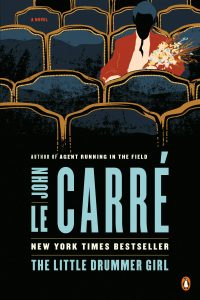
The Little Drummer Girl by John le Carré (1983)
John le Carré’s only novel to feature a female protagonist, this is one of my favourites for its study of character, its unbearable tension stretched over the span of hundreds of pages, and the ferocity of its political gaze. Charlie, a radical British activist and actress, is recruited by Israeli intelligence to go undercover with a suspected Palestinian terrorist. Charlie’s sympathies are caught between two men and two claims for truth and justice.
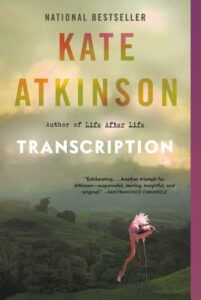
Transcription by Kate Atkinson (2018)
Kate Atkinson’s Transcription follows Juliet Armstrong, recruited as a spy in 1940, through the Second World War and into the Cold War. The novel examines and dismantles our national institutions and myths, from the BBC to MI6, exploring what it means to be British and what it means to be a woman. Atkinson recreates the atmosphere of London vividly, but even more than that this novel is a masterclass in slippery point of view.

American Spy by Lauren Wilkinson (2019)
Lauren Wilkinson’s debut novel interrogates what it means to be a spy for a system that is trying to preserve a national identity that excludes you. Marie Mitchell is an intelligence officer for the FBI in 1968. As a black woman, her career is thwarted by the all-white boys’ club, until she’s sent on a mission that will change how she sees herself and her nation. A riveting exploration of belonging, race, gender and the Cold War, with another beguiling use of point of view.
***

















